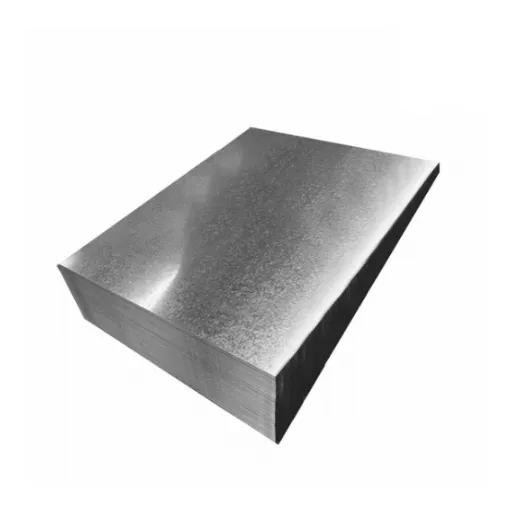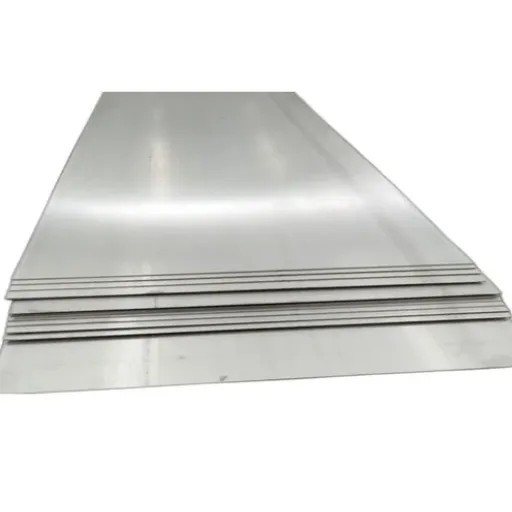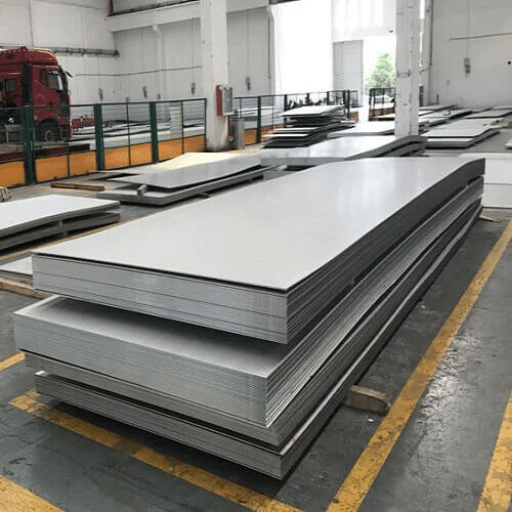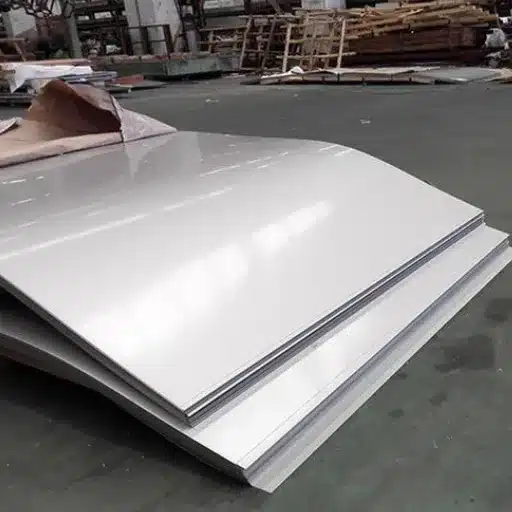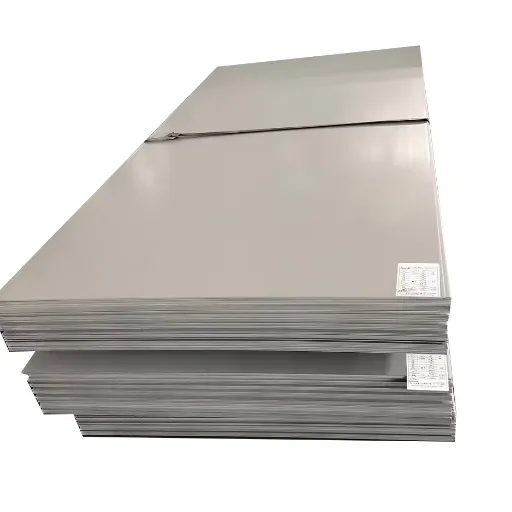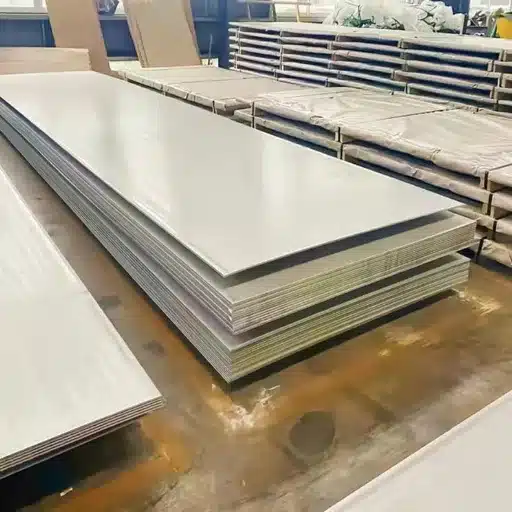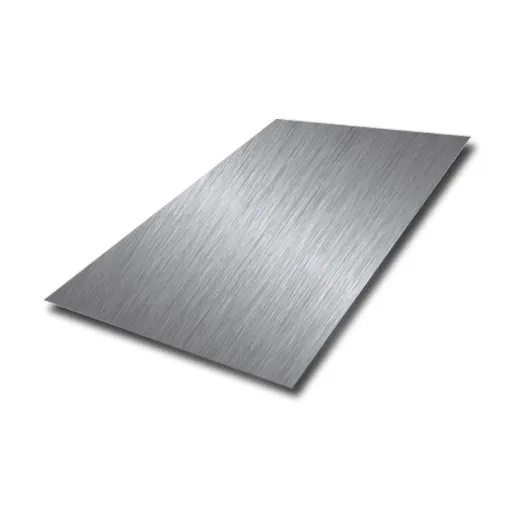Galvanized metal is versatile and durable and is thus put into use for a multitude of tasks across industries, making it a buy-for builders, artisans, and DIYers. Among the many choices available are 4×8 sheets of galvanized metal; with their practicality, durability, and versatility they beautify a range of applications—from construction to roofing, crafting, and custom furniture. But why are these sheets so commonly used, and how can you be sure you’re buying the right one? The guide will shine a spotlight on the advantages of 4×8 sheets of galvanized metal, cover some of their most frequent uses, and share expert tips to aid in wise purchasing decisions. Pro or noob in metals, this article has what you’ll need to know.
What is a 4×8 Galvanized Sheet?
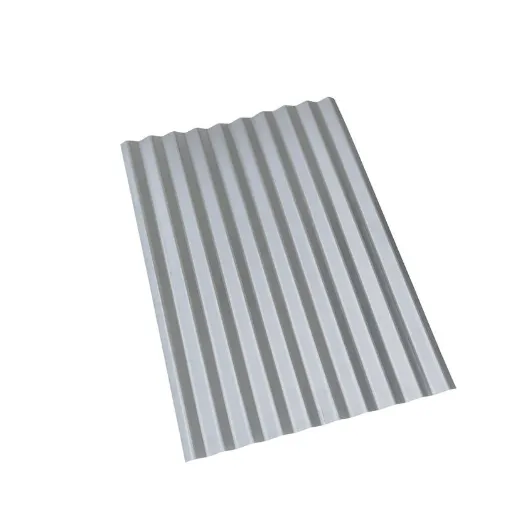
Definition and Characteristics
4×8 galvanized sheets are a rectangular structure usually meant to be 4 feet wide and 8 feet long. A thin layer of zinc is applied on the surface by a process called galvanization, which protects the base steel or iron from rusting and corrosion. The highly durable zinc coating is what makes galvanized sheets perform well in varying weather conditions, thus suitable for indoor as well as outdoor use.
Strength is that enticing feature of these sheets. The zinc coating protects it from corrosion caused by moisture, chemicals, or even extreme weather conditions. Also, galvanized sheets have got a very smooth finish on the surface, enabling their industrial, structural, and decorative use. Abrasion-resistance is yet another factor making them common choice in the high-wear environment.
The fourth factor that makes this sheet’s versatility essential is that: This standard size is a fit for most applications from roofing, panelling to automotive parts and is easy to transport and handle. Moreover, galvanized sheets are economics compared to other corrosion resistant materials; they give high protection with less maintenance or replacement. This big feature of being economical, durable, and versatile renders 4×8 galvanized sheets as a must-have in many industries.
Types of Galvanized Steel Sheets
Depending on the types for galvanized steel sheets, distinctions arise according to the way of coating and the intended application. The most common types are entirely hot-dip galvanized, electro-galvanized, and pre-galvanized.
Hot-Dip Galvanized Sheets
The sheets are coated with molten zinc. A thick coating forms with excellent protection against corrosion. Because of their durability and cost-effectiveness, hot dip galvanized sheets find widespread use in construction, automotive, and agriculture industries.
Electro-Galvanized Sheets
An electroplating process coats these sheets, giving a thin, uniform zinc coating. They may not stand heavy corrosion very well but are best in those applications which require that the surface be exceedingly smooth, such as for appliances and decoration.
Pre-Galvanized Sheets
These sheets are galvanized before fabrication, often by way of a continuous process. They are usually found in products where lighter-duty corrosion resistance is acceptable, to name a few, fences or metal furniture.
Each type of galvanized steel sheet provides particular merits; hence, it is very much important to consider the type selected in the light of the required application and environmental conditions.
Common Gauges: 22, 24, and 26
Galvanized steel sheets are offered in many different gauges, with 22, 24, and 26 being fairly common sizes. These gauges indicate the thickness of the sheet, with the thicker the sheet, the smaller the number. For example, the 22-gauge sheets are thick, generally strong, and thus most useful for structural applications where strength and resilience are required.
Sheets of 24 or 26 gauges, on the other hand, are thin and used in those situations where lightness and being flexible are favored without compromising corrosion resistance. This includes applications for household appliances, decorative finishes, and light metal furniture. They may be thin, but they are still excellent in keeping corrosion away, thanks to the galvanized coating.
💡 Important Consideration: Galvanized steel sheet purchasers need to decide on the wire gauge based on the needs of their particular project. Especially important in the case of load-bearing capacity of the structure, environment, and intended use are some basic considerations helping in the selection of the suitable gauge. If one comprehends these considerations, they will be able to best maximize the use of galvanized steel sheets in any given application.
Applications of 4×8 Galvanized Sheet Metal
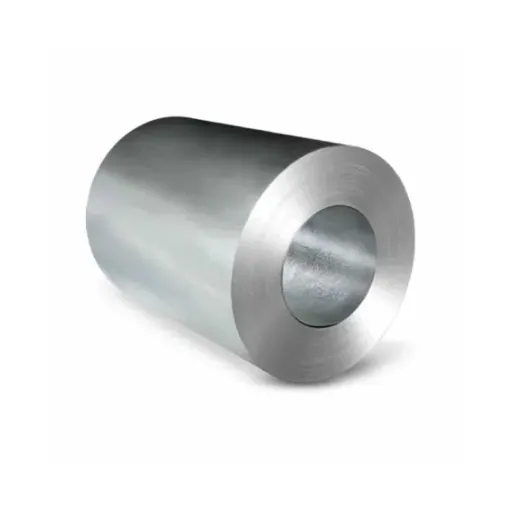
Construction and Roofing Uses
Roof Panels
Due to their durability and anti-corrosive properties, 4×8 galvanized sheet metals are usually utilized as roofing. The galvanized coating provides protection from severe weather situations, and hence it is widely accepted for residential, commercial as well as industrial types of roofing.
Wall Cladding
These sheets may be utilized for wall cladding of buildings. While strength and corrosion resistance provide support to construction, they also provide aesthetic beauty through their metallic finish.
Gutters and Downspouts
Sheets of galvanized steel are very much suitable to be fabricated into gutters, downspouts, etc. They quickly direct water away from structures, thereby avoiding water damage that would compromise the integrity of buildings.
Floor Decking
Its major use is in floor systems underpinning concrete slabs. The strong bearing loaded floorings make the product more suited to commercial and industrial levels.
Framing and Support Structures
In the world of construction, these sheet materials are employed for framing different structures, ranging from a small shed to a huge industrial building. The choice of materials for supports would ideally be lightweight yet strong; hence, they make excellent options.
Automotive and Industrial Applications
Automobile Body Panels
The galvanized sheets are extensively used in the manufacture of car body panels for long-lasting protection against rust and environmental hazards. This greatly increases the duration for which an automobile remains effective in hostile situations.
Exhaust Systems
Due to its resistance to temperature, the galvanized sheet finds use in manufacturing exhaust systems, thus enhancing the systems’ durability against heat and oxidation.
Machinery and Equipment Casings
In industrial machinery, galvanized sheets are employed for the casing, making sure that the internal workings are protected from moisture, chemicals, and wear.
Piping Systems
Because of their corrosion resistance and ability to maintain structural compatibility over time, galvanized steel pipes are most widely used in industries for fluid transportation.
Industrial Storage Solutions
This is for big capacious storage where capacity is being put on heavy-gauge galvanized steel sheets from sheet metal supplies. Since strength and hazardous conditions are of paramount importance, the shelving and storage racks created with galvanized sheets for large warehouses must stand a heavy load.
Home Improvement Projects
Roofing and Gutters
With rust prevention and the ability to weather changes in atmosphere, galvanized steel sheets attract a dispense for roof and gutter works. Industry reports state that homes with galvanized steel roofing have 40-70-year lifespans on average.
Fencing and Gates
Galvanized sheets are ideal for creating durable fencing and gates that can withstand outdoor elements for years without requiring extensive maintenance.
Key Benefits of 4×8 Galvanized Sheets
✓ Superior Corrosion Resistance
The zinc coating provides exceptional protection against rust and corrosion, making these sheets suitable for both indoor and outdoor applications in various weather conditions.
✓ Cost-Effective Solution
Galvanized sheets offer high protection with minimal maintenance requirements, making them more economical than other corrosion-resistant materials over their lifecycle.
✓ Versatile Applications
The standard 4×8 size fits most applications from roofing and paneling to automotive parts, and is easy to transport and handle across various industries.
✓ Long Lifespan
With proper care, galvanized steel sheets can last 40-70 years in residential applications, providing exceptional durability and return on investment.
Buying Guide: Factors to Consider
📋 Essential Factors Checklist
1. Gauge Thickness
Consider the load-bearing requirements of your project. Thicker gauges (16-22) for structural applications, thinner gauges (24-26) for decorative or light-duty uses.
2. Type of Galvanization
Hot-dip for maximum corrosion protection, electro-galvanized for smooth finish applications, pre-galvanized for lighter-duty projects.
3. Environmental Conditions
Assess exposure to moisture, chemicals, saltwater, and temperature extremes to select appropriate coating thickness and type.
4. Budget Considerations
Balance initial cost with long-term maintenance requirements. Higher quality sheets may cost more upfront but save money over time.
5. Application Requirements
Match the sheet specifications to your intended use—construction, automotive, industrial, or decorative purposes require different characteristics.
6. Supplier Reputation
Choose reputable suppliers who provide quality certifications, accurate specifications, and reliable customer support.
Gauge Specifications Comparison Table
| Gauge Number | Thickness (inches) | Thickness (mm) | Best Applications |
|---|---|---|---|
| 16 Gauge | 0.0598 | 1.52 | Heavy-duty structural, industrial storage |
| 22 Gauge | 0.0299 | 0.76 | Roofing, construction framing, HVAC |
| 24 Gauge | 0.0239 | 0.61 | Gutters, ductwork, light construction |
| 26 Gauge | 0.0179 | 0.45 | Decorative panels, appliances, furniture |
Note: Lower gauge numbers indicate thicker, stronger sheets. Choose based on your project’s structural requirements and environmental conditions.
Maintenance Tips for Galvanized Sheets
Cleaning and Care
If galvanized sheets need a clean everything for a long service life and functionality, one should use a soft cloth or sponge with a solution of mild dish soap and warm water to clean off any dirt, grease, or debris. Avoid abrasive brushes or harsh chemical cleaners that could break down the zinc coating on galvanized sheets and stop them from resisting corrosion. When dealing with stubborn stains or residues, use a diluted ammonia solution but make sure to rinse with plenty of clean water afterward.
🛠️ Best Practices for Maintenance
- Store galvanized sheets in dry and well-ventilated conditions away from moisture exposure to prevent accelerated corrosion.
- If a sheet is scratched or damaged, apply zinc-rich paint over it for restoration of the protective coating and to stop rusting.
- Conduct regular inspections for wear and damage to allow early attention to any issues that may threaten the integrity of this material.
- For industrial applications requiring higher grades of coating or sealants, these could be specified for enhancing durability in high-humidity environments.
- Always follow the directions of the manufacturer when it comes to special care and maintenance procedures.
Identifying and Preventing Rust
Rust, scientifically identified as iron oxide, comes into being when iron or its alloys react with oxygen and moisture within the ambient air. It usually occurs as crumbly formations of reddish-brown corrosion with rust, making the affected item much less strong and less aesthetically appealing. If identified early, rust can probably be prevented from causing a greater level of damage. Some of the warning signs of rust include discoloration, rough or flaky surfaces, and areas where the metal might be giving in. High humidities, saltwater, and chemical combinations can all help rust to form; thus, these conditions are the most dangerous.
⚠️ Rust Prevention Strategies
- Material Selection: Use rust-resistant alloys or metals, including stainless steel and galvanized steel, to maintain low risks of corrosion.
- Protective Barriers: Apply powder coatings, paint, or special rust inhibitors as a protective barrier between the metal and the outside elements.
- Moisture Control: Keep metal surfaces clean and dry. Clean and dry tools, machines, or outdoor furniture after every use.
- Advanced Techniques: For industrial applications, use vapor phase inhibitors (VPIs) and cathodic protection systems.
- Nanotechnology Coatings: Consider ultra-thin protective coatings that provide enhanced resistance to oxidation without compromising base material performance.
Repairing Damaged Sections
A short-term repair is made to ensure the long-term stability of a metal section with damages. Usually, the repair process opens with an evaluation of the damage, encompassing the extent of corrosion, cracks, or other surface faults. Advanced diagnostic techniques are utilized—mostly ultrasonic testing and radiographic inspection methods—to detect the hidden faults that may not be visible to the naked eye. After appropriate damage analysis, the engineer may decide about the repair methods needed—on welding, patching, or outright replacement of the affected sections.
🔧 Professional Repair Techniques
- Damage Assessment: Use ultrasonic testing and radiographic inspection to identify both visible and hidden faults.
- Welding Application: TIG or MIG welding allows high precision for targeted repairs while maintaining structural integrity under stress conditions.
- Corrosion-Resistant Alloys: Add alloys resistant to corrosion during the repair process for enhanced longevity.
- Protective Coatings: Apply appropriate coating methods followed by cathodic protection to limit environmental damage.
- Monitoring Systems: Implement IoT-enabled monitoring systems to track environmental conditions that trigger material deterioration.
Key Statistics About Galvanized Steel Sheets
📊 Industry Statistics
40-70
Years average lifespan for residential galvanized steel roofing
4×8
Feet standard sheet size (most common and versatile dimension)
16-26
Gauge range commonly available for various applications
Advantages and Disadvantages Comparison
| Advantages ✓ | Disadvantages ✗ |
|---|---|
| Superior corrosion resistance in various weather conditions | Zinc coating can be damaged by harsh chemicals or abrasive cleaning |
| Cost-effective with minimal maintenance requirements | Initial cost may be higher than non-treated steel |
| Long lifespan (40-70 years for residential applications) | Scratches or cuts can compromise protection if not repaired |
| Versatile for construction, automotive, and industrial uses | Limited aesthetic appeal compared to stainless steel |
| Easy to cut, shape, and fabricate for custom projects | Heavier than aluminum alternatives |
| Standard 4×8 size is convenient for transport and handling | May develop white rust (zinc corrosion) in certain environments |
Conclusion
4×8 sheets of galvanized metal represent an excellent investment for a wide range of applications, from construction and industrial uses to home improvement projects. Their superior corrosion resistance, cost-effectiveness, and versatility make them an indispensable material across multiple industries. With proper selection based on gauge thickness, galvanization type, and environmental conditions, these sheets can provide decades of reliable service.
Whether you’re a professional builder, industrial manufacturer, or DIY enthusiast, understanding the characteristics, applications, and maintenance requirements of galvanized steel sheets will help you make informed decisions that maximize value and performance. The standard 4×8 size offers the perfect balance of manageability and coverage, while the zinc coating ensures long-lasting protection against the elements.
By following the buying guidelines and maintenance tips outlined in this comprehensive guide, you can ensure that your galvanized metal sheets deliver optimal performance throughout their impressive lifespan. Remember to choose reputable suppliers, select the appropriate gauge for your specific needs, and implement proper care procedures to protect your investment for years to come.
References
- Tom’s Metalworking Pages – This page discusses materials, including 4×8 foot pieces of plate steel, and provides insights into metalworking processes.
- University of Alabama Construction Public Info– A PDF document detailing design guidelines, including the use of 4×8 sheets for mechanically anchored systems and specifications for galvanized sheet metal.
- University of California, San Diego – Cold-Formed Steel Report – A comprehensive report on materials, including galvanized sheet metal, used in cold-formed steel framing.
Frequently Asked Questions (FAQ)
Q: What is a 4×8 sheet of galvanized metal?
A: A 4×8 sheet of galvanized metal is a flat sheet measuring 4 feet by 8 feet with zinc coating to impart corrosion resistance. This sheet sees some common applications in construction, ductwork, and siding, mixing with other requirements for sturdiness and durability.
Q: What gauge sizes does a 4×8 sheet of galvanized metal come in?
A: When it comes to gauges for 4×8 sheets of galvanized metal, you may find 22 gauge, 24 gauge, or a 16-gauge sheet. The thicker ones, like 16-gauge, are harder with a higher level of sturdiness and thin sheets are for the light draining jobs.
Q: What are the most common uses for a 4×8 galvanized sheet?
A: A 4×8 galvanized metal sheet is generally used in construction for siding and roofing, while also being utilized in ductwork for ventilation systems. It is also used where high durability is required for heavy applications.
Q: How does the thickness of a galvanized sheet affect its performance?
A: The thickness of a galvanized sheet affects its sturdiness and applications for which it can be fit. Structurally supporting applications are served by thicker sheets, such as 16-gauge, while thinner ones can be chosen for applications like fume hoods or simply decorative purposes.
Q: Can it be cut-to-size with a 4×8 sheet of galvanized metal?
A: Yes, metal shears or a metal-cutting saw can easily cut down a 4×8 sheet of galvanized metal to size. This is done considering the requirements of a project.
Q: Is it suitable for outdoor use?
A: Yes, a 4×8 galvanized sheet is very much suitable for outdoor use because of its resistance to corrosion. It can withstand various weather conditions, making it ideal for outdoor construction requirements including siding and roofing.
Q: How are galvanized sheets made?
A: Most galvanized metal sheets are made by coating base steel with zinc through hot-dip galvanizing or sometimes electro-galvanizing. This process increases the sheet’s ability to stand against rusting and corrosion thus ensuring a longer life.
Q: What should be taken into consideration when choosing a gauge for my galvanized sheet?
A: In choosing a gauge for a 4×8 sheet of galvanized metal, please consider the desired application, required strength, and weight it will be required to bear. Thicker gauges such as 16-gauge will accept structural applications, while thinner ones would be engaged in ventilation or decorative uses.

